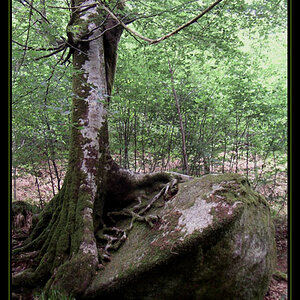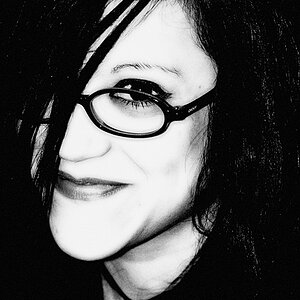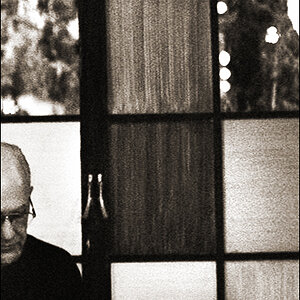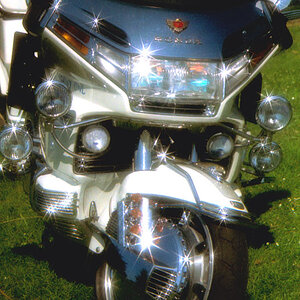Derrel
Mr. Rain Cloud
- Joined
- Jul 23, 2009
- Messages
- 48,225
- Reaction score
- 18,941
- Location
- USA
- Website
- www.pbase.com
- Can others edit my Photos
- Photos OK to edit
From Canon's own web pages at Canon EOS 7D Digital SLR
"Quick-return half mirror (transmission: reflection ratio of 40:60"
Am I understanding that correctly, that the 7D will have some type of pellicle mirror that reflects only 40 percent of the light,and allows 60 percent transmitted light to go through the mirror and to the imager?
I know they have a NEW, a truly NEW type of viewfinder screen; how does that work with this half-mirror with 40:60 transmission/reflection?
One can also see from Canon's own illustrations that the 19 AF points are all still tightly-spaced in a centrally-biased diamond shape...still the same basic diamond-shaped array with all the AF points pretty much biased toward the very center of the frame and basically very limited AF coverage toward the edges of the frame. Why does Canon continue with this same, diamond-shaped array they have been using for years now?
"Quick-return half mirror (transmission: reflection ratio of 40:60"
Am I understanding that correctly, that the 7D will have some type of pellicle mirror that reflects only 40 percent of the light,and allows 60 percent transmitted light to go through the mirror and to the imager?
I know they have a NEW, a truly NEW type of viewfinder screen; how does that work with this half-mirror with 40:60 transmission/reflection?
One can also see from Canon's own illustrations that the 19 AF points are all still tightly-spaced in a centrally-biased diamond shape...still the same basic diamond-shaped array with all the AF points pretty much biased toward the very center of the frame and basically very limited AF coverage toward the edges of the frame. Why does Canon continue with this same, diamond-shaped array they have been using for years now?










![[No title]](/data/xfmg/thumbnail/40/40286-86401b94de8b01bea8bb4ea154aaea0a.jpg?1619739408)



